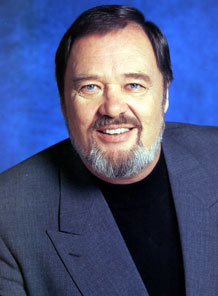

David
Clayton-Thomas and Blood, Sweat & Tears
In
the spring of 1962, David Henry Thomsett walked out of Millbrook Reformatory
with twenty dollars and a battered old guitar, and he never looked back.
He was twenty-one and had been in and out of such institutions since age
fifteen. As a homeless young
runaway, he had been jailed a half-dozen times for vagrancy, parole violations,
petty theft. While other teenagers
in suburban Toronto were attending high school proms, David was a street kid, a
loner, sleeping in parked cars, stealing food and clothing, learning how to
survive and fight behind bars. He
might have been trapped in the endless cycle of recidivism but for that old
guitar. It had been left behind by
an outgoing inmate, and David claimed it. He
began to learn to play, practicing alone, late into the night, and for the first
time in his life he had a dream, a plan for the future.
He
left Millbrook tough and determined, vowing never to return.
He came to Toronto, to Yonge Street, a rough, brawling strip filled with
sex shops and bars, hookers and hustlers of every kind.
Rythym and Blues was the music of choice on “the strip”.
It migrated up from Chicago and Detroit and was adopted by the musician
of Toronto. The king of “the
strip” was Ronnie Hawkins. The
Arkansas-born rocker and his band “The Hawks” ruled Yonge Street. David would hang around the clubs just for a chance to sit in
with “The Hawks” or to sing the blues with Robbie Robertson and Levon Helm.
Soon he was leading bands of his own, “The Shays” and “The Bossmen”.
To put some distance between his new life and his past, he changed his
name to David Clayton-Thomas and soon began to attract attention in the
fledgling Canadian music industry.
His
first venture into the recording studio produced “Boom Boom”, a john lee
Hooker blues which rose to number one locally.
He then wrote “Walk That Walk” and “Brainwashed”.
Both rocketed to number one nationally.
A top selling album, numerous TV Appearances, and hundreds of club and
concert dates followed, and David Clayton-Thomas was known across Canada.
Paul Anka, Canada’s biggest international star, invited David to New
York to guest on NBC’s “Hullabaloo”.
After this nationally televised appearance. David returned to Toronto.
But New York had changed him forever.
He took his band out of the lucrative bars on “the strip” and into
the coffee houses of Yorkville, hangout for the artists, writers, and musicians
of the Bohemian set. The money was
lean, but here David could play alongside the great blues men he worshipped:
John Lee hooker, Ligntnin’ Sam Hopkins, Son house, Muddy Waters, Willie
Dixon, Sonny Terry, and Brownie MaGee.
His
band soon drifted away. There was
simply not enough money on Yorkville to support them.
But David hung in, doggedly playing for whoever would listen, learning
the music from the masters. John
Lee Hooker took the young singer-guitarist into his band, and when he came to
new York to play a Greenwich Club, David came with him.
When that gig ran out, Hooker left for Europe and David stayed on in the
Village.
It
was 1967, and the Village was a hotbed of creative activity.
David roomed with other hungry young musicians, playing for pizza money,
hanging out in all-night cafes, arguing music, politics and philosophy with the
young activist firebrands of the era, sharing gigs with Richie Havens, James
Taylor, and Jimi Hendrix, playing “basket houses” (play a few songs and pass
the basket). Scuffling to survive
was nothing new to David.
Word
got around about the white blues singer from Canada who sang and played with
such conviction. Genuine stars
began to show up where he played. One
night folksinger Judy Collins dropped in and was deeply moved by the intensity
of the young man’s music. She
told her friend Bobby Colomby about the experience, and the next night they
returned together. (Bobby was
trying to hold together his faltering band “Blood, Sweat, & Tears”.
Even though the band’s first album, “Child is Father to the Man”,
had just been released. The band
was already torn by infighting over direction and leadership.
Singer Al Kooper and several founding members had already left.)
BS&T’s drummer was stunned by what he heard that night. He immediately asked the young Canadian blues singer to help
reorganize his failing bad, and an American musical institution was born.